Dear Plant Lover, How are you all?
Today I’m using what’s in the garden to give you some prompts for jobs that you can do in August, which is a fast-moving month. We had cabbage, beetroot, fennel, and spinach. They’ve all finished in the last three weeks. As soon as plantings finish, I take the opportunity to pop in new ones.
Ridge Cucumber and Multisown Beetroot:
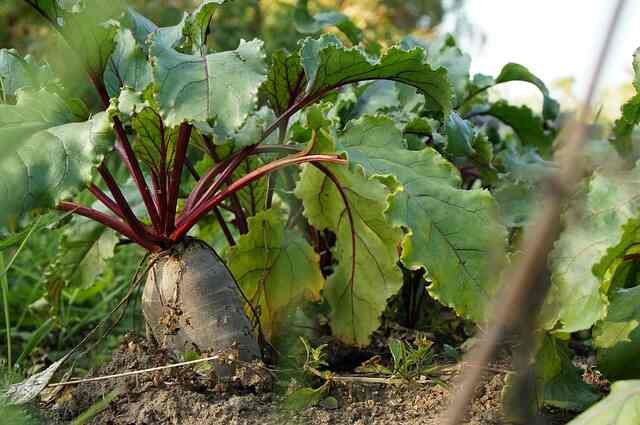
So, there’s some ridge cucumber. You could still plant cucumber right in early August. Don’t hang around if you’ve got transplants, particularly. Beetroot. Everything raised from transplants, like multisown beetroot. They’ve been in the ground for about ten days there.
Carrots
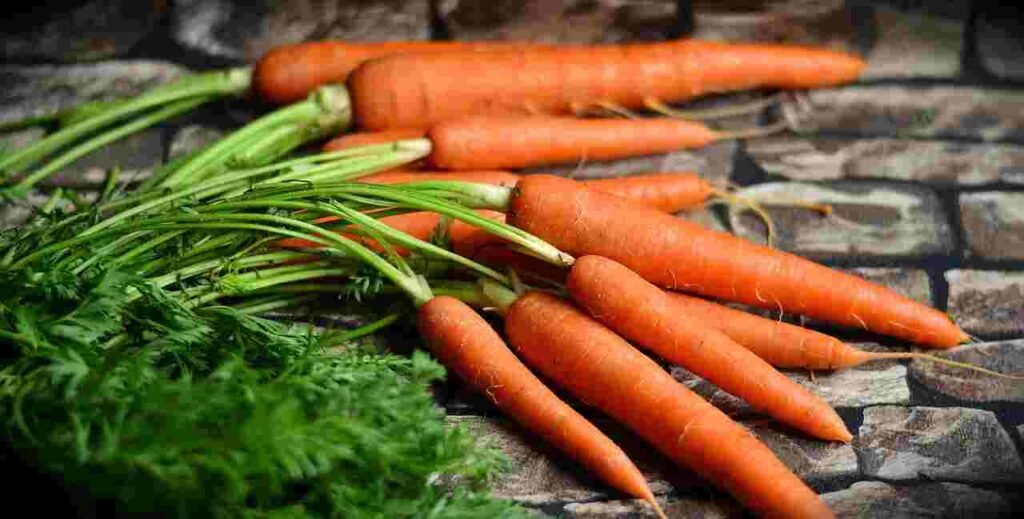
Carrots have been a real drama this year because of slugs. I’ve suffered like many of you have, but my garden is more open than many, so I’m fortunate in that respect. Also, I don’t have wooden sides and so on, so I’m always looking to keep habitat to a minimum. When you see the first carrots, you just hope nothing’s gonna eat them, because they’re so vulnerable. There’s not much habitat here, so I’m pretty sure they’ll be okay.
Onions, Downy Mildew - Early Harvest
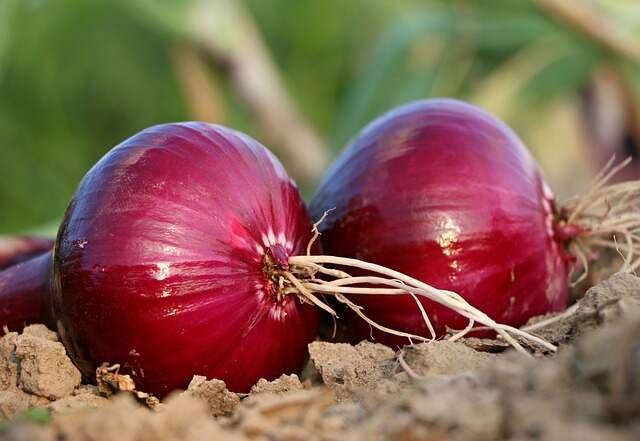
Onions, Downy Mildew – Early Harvest: Whereas the onions are not looking good. And this leads on to one big job in August, actually: harvests. So, a lot of plantings like we’ve already seen, and then having plants ready. These onions, though, they’re going to harvest a bit earlier than I would have liked because they’ve got this horrible disease. It’s one of my least favorite diseases: downy mildew. That’s not the same as powdery mildew. There are some dark spots. It’s all of that gray and not even bright and cheerful, like powdery mildew. Leaves start to go sort of dark and gray, and then they go yellow. Basically, the goodness is being sucked out of them. If it gets down into the neck of the onion, that means that the onion will rot and won’t store. So, I’m thinking to harvest these, like tomorrow even, and just fold over, bend over the tops. You do that, bend the top. This is one way to harvest onions, even when they’re not fully mature. Actually, that’s not too bad, just smaller than it would have been.
Kale and When to Water:
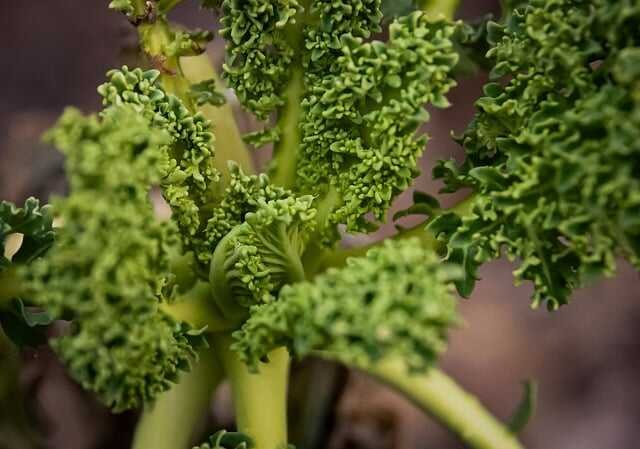
Kale and When to Water: But having said that, I’m also thinking ahead. And I’ve got kale there. So, this kale went in about ten days ago. Needs a bit of water, actually. We’re very dry, and a lot of this we have been watering as and when. Top times to water is when you put in new plants like there or new sowings; make sure it’s wet, and then just make sure they’ve got going. Then the second big time is when plants are cropping, like the peas on the end that we saw there.
Potatoes - Casablanca Variety, Grass as Mulch:

Potatoes – Casablanca Variety, Grass as Mulch: They’re ready for water. And these potatoes. I haven’t watered them much, but I could have watered a bit more. And they’re cropping now, so… In August, you’re going to have potato harvests. Big time, I hope. In this humid weather, late blight could be a factor. So, that’s something to think about. Like this is no-dig Casablanca. It’s not a huge harvest, but it makes very nice-sized potatoes, the Casablanca. Actually, more than I thought. By the time we had these up… We’re getting at the moment just over a kilo, heading up for one and a half now. This is definitely… crikey. This is like, wow. So, all of that from one plant, that probably is about a kilo and a half. Three pounds. Always, with potatoes, when you’re harvesting with no-dig, you can see you don’t need to fork. The surface is soft. But because the surface below is firm, not hard, the roots can go down. But it’s firm, which means that the tubers, the potatoes, don’t go down too far. They’re quite easy to scoop out or pull out. I did use a bit of grass mulch to keep the light off, and it has worked. I was worried about slugs, so thanks to people who’ve been suggesting that. That’s just mown grass that you could put on top of your potato like that. We used a bit of extra compost too.
Multisown Leeks:
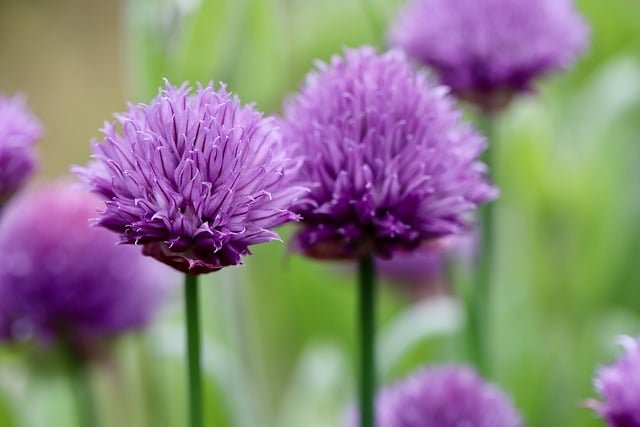
Multisown Leeks: And then the classic planting that follows potatoes is leeks, like there. So, that’s multisown leeks. If you haven’t thought about that already, it’s probably too late, I’m afraid. You need to sow them by early May. Those are actually sown in early April, multisown in modules. Potted on, it’s called. Popping them into pots of compost to keep them growing. And that’s one way of keeping transplants going if you’re not ready in the ground for them.
Lettuce - Young Transplants:
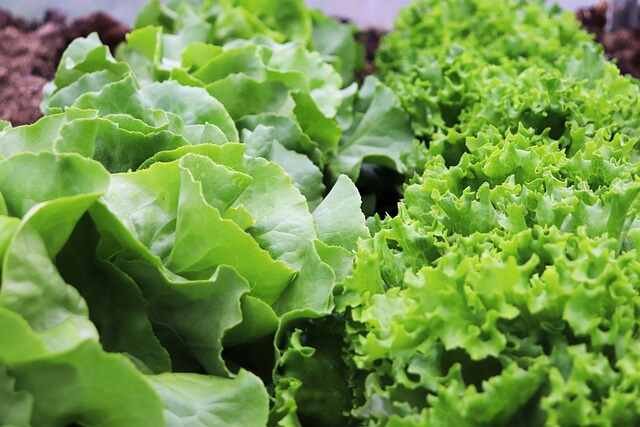
Lettuce – Young Transplants: Whereas something like lettuce, we’re putting in very small. And these went in just two days ago. Even yesterday, because this was carrots. And so, the carrot harvest finished. I did it all in one go and popped in the lettuce.
Celery - Lots of Water Needed:
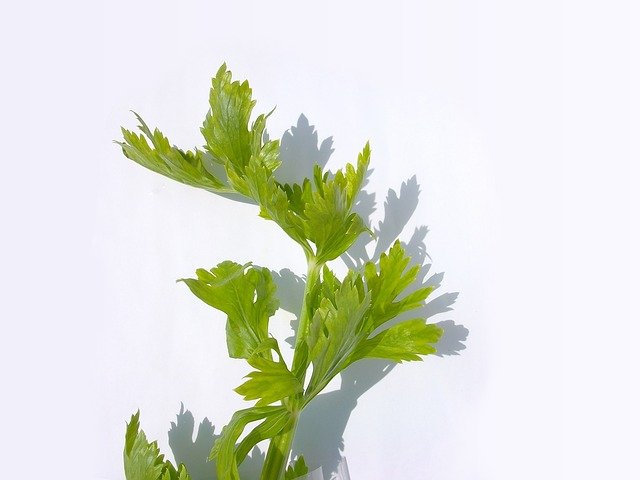
Celery – Lots of Water Needed: Then we’ve got some celery, which is going to finish. This is one of the vegetables that needs the most water. If you have any dry weather and you’re growing celery, just give it some water. It will notice the difference because the stalks are not stringy so much. They always are a bit, but you’ll get more tender stalks. Anyway, this will finish, say, in three weeks.
French Bean, Planted Today:
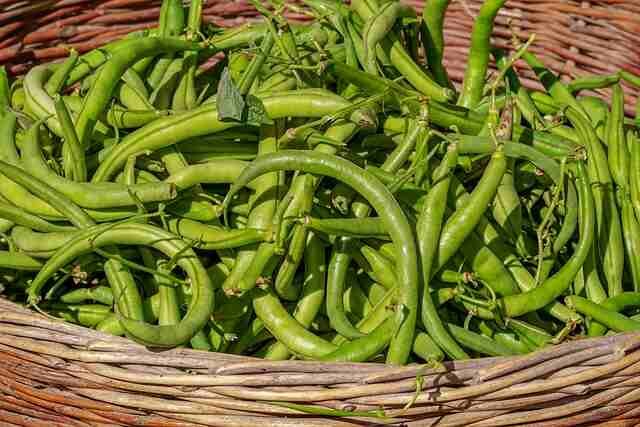
French Bean, Planted Today: So, just today, using my long-handled dibber, I just made little holes here, eight little holes along a 5-foot, 1.5-meter wide bed, and popped in French bean seeds, dwarf French beans. You could still sow in the first week of August, but don’t wait any longer. These timings are for the temperate maritime zone eight. If you’re in hotter climates, or even, say, Texas, which is also zone eight, oddly enough, you want to wait a bit and not sow in the high heat of summer. I would take every opportunity you can to get new sowings made and new plantings ready. Maybe use some shade in your propagating area to make the most of the remainder of the growing season. We’re only halfway; we’re not even halfway even.
Garlic Harvest, and Rust:
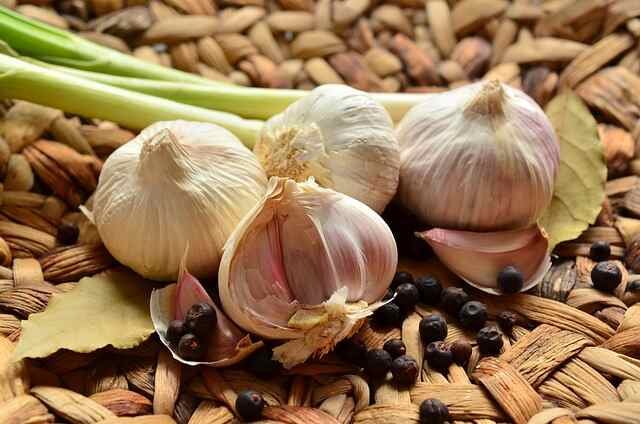
Garlic Harvest, and Rust: Garlic harvest has happened. If you’ve still got garlic in the ground, don’t delay. Just one exception to that is hardneck, and particularly if it doesn’t have rust. We had a lot of rust, these horrible orange spots. I put this on the compost heap. Some people say you shouldn’t. I just compost everything. Okay, I’ve got hot compost; that’s true, but I believe that these diseases are so plant-specific, like the onion mildew. It depends on weather. It’s not whether you’ve got it around; it just arrives. But that’s the difference with garlic, where it’s been under cover and didn’t get rust so much, compared to outside. This is what happens if you leave your garlic in the ground too long. The outer skin starts to decay. And then you see the bulbs. That’s not the end of the world, but if you go on from there, you’re going to get a very muddy garlic bulb. Doesn’t look so nice. Maybe it won’t store quite so well.
Basil, Under Cover, Too Hot Outside:
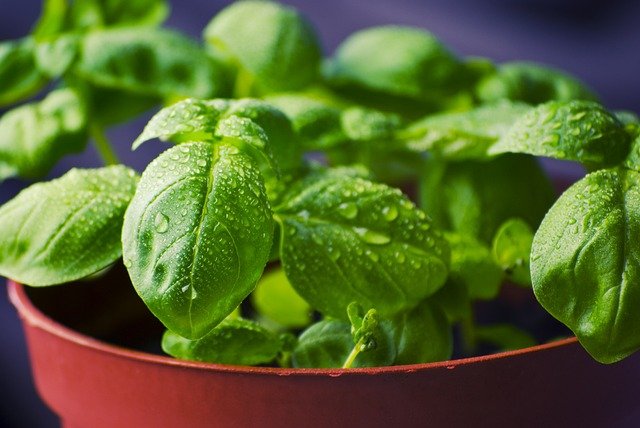
Basil, Under Cover, Too Hot Outside: That’s a plant that I like to keep growing undercover at this time of year. So, undercover, here we’ve got basil. We’ve been harvesting this basil now for over two months. And I think it will keep going quite well. So, it’s not that you have to sow basil all the time. You just need to keep picking it. And you can do that undercover more easily than outside, especially in a cool summer. We actually have had a warm June, so it’s possible that you could have some basil outside, but I wouldn’t want to risk it. So, we’ve got basil there. I’ve got more lettuce coming.
Cucumber, Under Cover, Protection with Mesh Covers, Timing of Planting:
Cucumber, Under Cover, Protection with Mesh Covers, Timing of Planting: And I’ve got undercover cucumber. I had my first cucumber a week ago, and there’s another one there, I noticed. It didn’t have mildew, and that was down to the timing of the planting. So, that was an end-of-March sowing, early April planting, undercover. We are noticing more of these pests, so we’ve had quite a lot of cucumber beetle, which I noticed, actually, particularly on the spring planting that we did in April and May, in the greenhouse of all places. So, I think what I might do next year is put one of these mesh covers over the cucumber. It’s still looking very happy under there. There’s quite a bit of warmth, and the beetles can’t get through. So, this is something we did on the carrot bed. We put a cover on, and it’s worked a treat. If you had to choose, for example, between using covers against rabbits, I would say go for a mesh cover. Rabbits, they chew holes in them. But this is really good for deterring flea beetle, for example. Any of the early plantings you do in the spring will benefit from being undercover. When I say undercover, I mean under a mesh like this. So, here’s the cover we put over carrots, and there’s that transplant beetroot.
Fennel - Sowing Under Cover for Autumn Harvest:
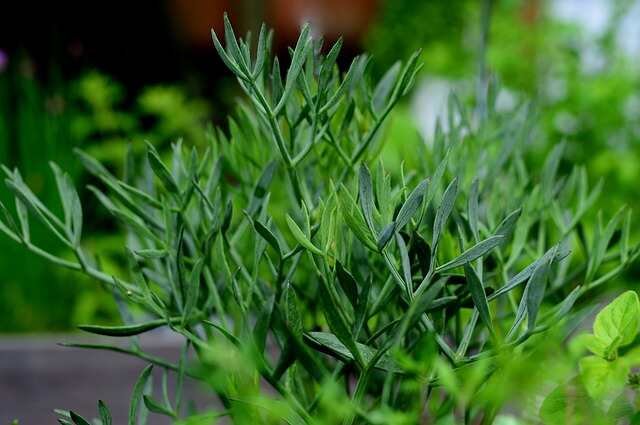
Fennel – Sowing Under Cover for Autumn Harvest: Everything is growing well, but we have different timings of sowings. Like fennel, which is still at the small stage, undercover, just sown about a week ago. And we’re bringing it along because this will be for an autumn harvest. And I often get asked that, actually. You know, “Can you still sow fennel?” You can sow fennel anytime until mid-August. The only thing is, the later you sow it, the less it will grow. So, if you want big bulbs, sow it early June, undercover or in the ground. It’s just that the risk then is, if you do it undercover, you get bolting.
Compost
Compost – Making, the Temperature of Heaps, Stage of Decomposition, Rain, Smaller Compost Bins: This is one of the big jobs for August. It’s a chance to make loads of compost. We’ve been doing a lot in June already, and hopefully you have, but, you know, scrounge from your neighbors, whatever. My neighbor over there, he’s contributed about seven wheelbarrow-fulls of thistles and weeds to this heap. In my case, I know it’s going to get hot. In fact, this thermometer… That’s probably… What that’s in is about ten days old edition, and it’s reading 65°C, that’s 140°F roughly. Certainly hot enough to kill weed seeds. I’m happy to see it. They’re not hotter; you don’t really want to go too hot. But this heap was only started on the 29th of May, and it’s now the 25th of June, so we’re probably going to keep adding to it for about another week. I’m going to show you quite a bit about compost making. It’s so relevant to the season. It’s a prelude to my new book, which is coming out in September, because I’ve noticed so much interest in compost. This is a heap that we made in October. It’s looking quite beautiful now. Having said that, there’s still bits. I think some people might think, oh, you know, I need to get my compost fully decomposed. But actually, that’s fine. This is how I put it on. It gives food for soil fungi and other organisms in the soil. So, don’t think it has to all look perfect. We don’t sieve it at all. We sieve woodchip before putting it in the heap. Otherwise, it just goes on like that. This heap is a new one, small size. That’s something else you could think about. If you’re struggling to get enough compost together, maybe go for a smaller heap like this. It’s 3 feet square, 90 centimeters, something like that. What I’m aiming for, particularly at this time of year, is to get a cover on top. I mean, it’s not as crucial at the moment because we’re quite dry, but later, when the rain does come, just keep the rain off. This is already shrinking. It was made… a lot of grass, actually. It’s a real mix of fresh weeds, soft green material. We had a lot of grass. I get some horse manure, but not too much. Too much would get it really hot, and then you wouldn’t get fungal breakdown. There’s plenty of activity going on. You don’t want to mix your compost too much. Just put it together like that, and it should be good.
And that’s all for August.I hope this has been interesting and inspiring for you, and I’ll be back with more updates. Enjoy your gardening!



